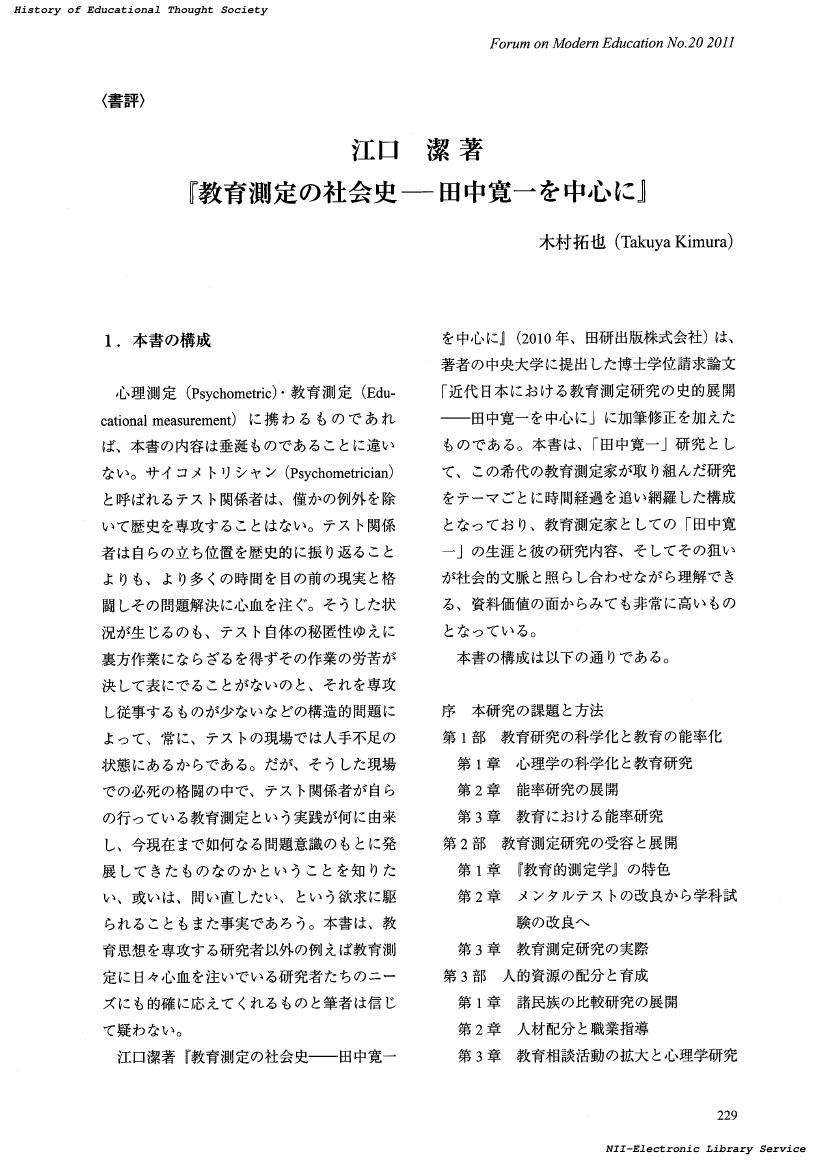- 著者
- 冨澤 かな 木村 拓 成田 健太郎 永井 正勝 中村 覚 福島 幸宏
- 出版者
- 一般社団法人 情報科学技術協会
- 雑誌
- 情報の科学と技術 (ISSN:09133801)
- 巻号頁・発行日
- vol.68, no.3, pp.129-134, 2018
<p>東京大学附属図書館U-PARL(アジア研究図書館上廣倫理財団寄付研究部門)は,本学所蔵資料から選定した漢籍・碑帖拓本の資料画像をFlickr上で公開している。資料のデジタル化とアーカイブ構築のあり方を模索した結果,限られたリソースでも実現と持続が可能な,小さい構成でありながら,広域的な学術基盤整備と断絶せず,高度な研究利用にも展開しうる,デジタルアーカイブの「裾野のモデル」を実現しうる方策として選択したものである。その経緯と現状及び今後の展望について,特に漢籍・碑帖拓本資料の統合メタデータ策定,CCライセンス表示,OmekaとIIIFを利用した研究環境構築の試みに焦点をあてて論ずる。</p>
1 0 0 0 OA アジア・環太平洋地域のナショナルデジタルアーカイブ政策 : 文化資源の統合と連携の諸相
- 著者
- 阿部 卓也 加藤 諭 木村 拓 谷島 貫太 冨澤 かな 宮本 隆史
- 出版者
- 東京大学大学院情報学環
- 雑誌
- 情報学研究 : 学環 : 東京大学大学院情報学環紀要 = Journal of information studies (ISSN:1880697X)
- 巻号頁・発行日
- vol.92, pp.27-68, 2017-03-30
教員研究論文
- 著者
- 木村 拓哉 奥田 次郎
- 出版者
- 電子情報通信学会
- 雑誌
- 電子情報通信学会技術研究報告 = IEICE technical report : 信学技報 (ISSN:09135685)
- 巻号頁・発行日
- vol.115, no.267, pp.13-18, 2015-10-25
1 0 0 0 スパース推定に基づく適応正則化オンライン学習の特徴選択問題
オンライン学習とは, 近年機械学習の分野において注目を集めている学習法であり, その利点は, 逐次的にデータを学習しモデルを構成することにある. 本稿では, 適応正則化学習 (Adaptive Regularization of Weight Vectors; AROW) と呼ばれるオンライン学習モデルの特徴選択を可能にするために, スパース推定に基づく方法を提案する. 推定アルゴリズムには, 座標降下法 (coordinate descent method) を用い, これにより高速化も実現する. 提案手法は, いくつかのチューニングパラメータに依存しているため, これらの値を交差検証法を用いて客観的に選択する. ベンチマークデータに基づく数値実験を通して, 提案手法の有効性を検証する.
- 著者
- 木村 拓
- 出版者
- 九州大學朝鮮學研究會
- 雑誌
- 年報朝鮮學 (ISSN:09169601)
- 巻号頁・発行日
- no.19, pp.1-23, 2016-12
1 0 0 0 OA 江口潔著, 『教育測定の社会史-田中寛一を中心に』, 田研出版株式会社, 2010年8月
- 著者
- 木村 拓也
- 出版者
- 教育思想史学会
- 雑誌
- 近代教育フォーラム (ISSN:09196560)
- 巻号頁・発行日
- vol.20, pp.229-234, 2011-09-18 (Released:2017-08-10)
1 0 0 0 OA キャリア・職業教育による高等教育の機能的分化と質保証枠組みに関する研究
- 著者
- 吉本 圭一 亀野 淳 稲永 由紀 塚原 修一 村澤 昌崇 椿 明美 藤墳 智一 江藤 智佐子 酒井 佳世 木村 拓也 志田 秀史 三好 登 川俣 美砂子 飯吉 弘子 濱中 義隆 新谷 康浩 伊藤 一統 松高 政 坂野 慎二 長谷川 祐介 沼口 博 内田 由理子 安部 恵美子 渡辺 達雄 永田 萬享 飯田 直弘 舘 昭 小方 直幸 伊藤 友子 立石 和子 有本 章 赤司 泰義 秋永 雄一 佐藤 弘毅 杉本 和弘 竹熊 尚夫 ジョイス 幸子 吉川 裕美子 菅野 国弘 TEICHER Ulrich LE MOUILLOUR Isabelle SCHOMBURG Harald 石 偉平
- 出版者
- 九州大学
- 雑誌
- 基盤研究(A)
- 巻号頁・発行日
- 2013-04-01
本研究は、ユニバーサル化した第三段階教育システムを対象とし、大学型・非大学型の教育プログラム単位での機能的分化と質保証のあり方を探究した。教育の目的・方法・統制の観点で、学術型とキャリア・職業型の教育を実証的に把握した。(1)共同IR型卒業生調査から学修成果の修得と活用、コンピテンシーの必要と修得という2つのベクトルがみられた。(2)非大学型教員調査の結果から機関の職業・地域志向性と個人の研究志向性との葛藤がみられた。(3)WILなどカリキュラム調査から教育高度化と内外ステークホルダー関与の方向性について、分野別の特徴を把握した。(4)国家学位資格枠組(NQF)から日本への示唆が得られた。
- 著者
- 長谷川 利路 木村 拓哉 佐々木 隆士 岡田 正 虫明 聡太郎 原田 徳蔵
- 出版者
- 特定非営利活動法人 日本小児外科学会
- 雑誌
- 日本小児外科学会雑誌
- 巻号頁・発行日
- vol.36, no.3, 2000
1 0 0 0 OA 大規模継続データの構築を通した大学生の認知的・情緒的成長過程の国際比較研究
- 著者
- 山田 礼子 木村 拓也 井ノ上 憲司 森 利枝 舘 昭 吉田 文 西郡 大 園月 勝博 相原 総一郎 沖 清豪 杉谷 祐美子 田中 正弘 安野 舞子 渡辺 達雄
- 出版者
- 同志社大学
- 雑誌
- 基盤研究(A)
- 巻号頁・発行日
- 2010
本研究の成果は、(1)KCSS(韓国版大学生調査)を24年に実施し、日韓のデータ結合により分析、(2)日本では、平成25年まで、延べ866大学・短大から約14万人がJFS、JCSSとJJCSSに参加するなど標準的調査が根付いた。(3)24年には中国版CSSが試行され、25年には、上海市で中国版CSSの実施へと進展し日本発の標準的調査のアジアでの展開への基盤が形成されつつある。(4)2014年末までに、14万人のデータを格納し、参加大学が利用できるデータベースを開発、(5)日本のカレッジ・インパクト研究を下記で示す理論モデルにまとめたという5点が挙げられる。
- 著者
- 井原 欣幸 木村 拓也 澤井 利夫 小角 卓也 山内 勝治 米倉 竹夫 福澤 正洋
- 出版者
- 特定非営利活動法人 日本小児外科学会
- 雑誌
- 日本小児外科学会雑誌
- 巻号頁・発行日
- vol.46, no.4, 2010
- 著者
- 長谷川 利路 木村 拓哉 佐々木 隆士 岡田 正 虫明 聡太郎 原田 徳蔵
- 出版者
- 特定非営利活動法人 日本小児外科学会
- 雑誌
- 日本小児外科学会雑誌
- 巻号頁・発行日
- vol.36, no.2, 2000
1 0 0 0 OA テストの専門家の職業キャリアと大学(院)教育とのレリバンスに関する日米比較
- 著者
- 木村 拓也
- 出版者
- 長崎大学
- 雑誌
- 若手研究(スタートアップ)
- 巻号頁・発行日
- 2007
テストによる品質保証が教育において求められている中で、「テストの専門家」は戦後減少の一途を辿り、「テストの専門家」の供給源も1 大学と限定されてきた現状が明らかとなった。結果、日本の公的テストを支える人材は限られており、少数の者の労苦と彼らのマンパワーに支えられている現状が浮き彫りになった。テスト学会会員対象に行った調査では、多種多様な分野からの参入が浮き彫りになり、様々なレベルでの「テストの専門家」の養成に努めなければならない事態であることが確認された。
1 0 0 0 OA 現代テスト理論を応用した大学生調査の経年比較分析モデルの構築
近年、高等教育の質的保証が求められてくる中、今後、継続的な大学生調査が学内外で行われることを前提とし、学内外での調査同士の結果を比較可能なように等化したり、異なる年度に行われた調査を等化したりして、学習成果の経年変化を統計的に妥当な方法で検証できるようなアセスメント・モデルを構築した。試みに、大学満足度を例に、その経年変化及び学年毎の変化する満足度の状況を明らかにした。その結果、全国的な傾向として、満足度が1年次から2年次に向けて落ち込むことが分かった。ただし、1年次には、大学満足度が低くとも、学年進行が進むにつれて上がっていく大学も見られた。
1 0 0 0 IR 大学入学者選抜と「総合的かつ多面的な評価」 : 46答申で示された科学的根拠の再検討
- 著者
- 木村 拓也 Takuya KIMURA 京都大学経済研究所 Institute of Economic Research Kyoto University
- 出版者
- 東洋館出版社
- 雑誌
- 教育社会学研究 = The journal of educational sociology (ISSN:03873145)
- 巻号頁・発行日
- vol.80, pp.165-186, 2007-05-31
The purpose of this paper is to reexamine the use of "Comprehensive and Multi-dimensional Evaluation" as the basis for University Entrance Examinations. Though the phrase "Comprehensive and Multi-dimensional Evaluation" itself was first articulated in the 1997 report of the Central Council for Education (Chuou Kyoiku Shingikai), the concept itself came into existence immediately after the postwar period. In fact, "comprehensive evaluation" was merely an excuse for avoiding having to add the score of Japanese Scholastic Aptitude Test (Shingaku Tekisei Kensa, used from 1947 to 1954) into the total score of the University Entrance Examination. Moreover, the term "multi-dimensional evaluation" appeared in the outline of the University Entrance Examination (Daigaku Nyugakusha Senbatsu Jisshi Youkou), as it is proposed in the first report of the National Council on Educational Reform (Rinji Kyoiku Shingikai) in 1985. In fact, the report of the Central Council for Education (Chuo Kyoiku Shingikai) in 1971 stated that "Comprehensive and Multi-dimensional Evaluation" was scientifically valid as a basis for University Entrance Examinations. The report is famous as the only report based on evidence, and is generally known as the "1971 Report" (Yonroku Toushin). In the interim report, the Central Council for Education stated that follow-up surveys by the National Institute for Education and the Educational Test Research Institute (Nouryoku Kaihatu Kenkyujyo) had proven that a "Comprehensive and Multi-dimensional Evaluation" could be a valid selection method for predicting a good Grade Point Average after entrance to university. However, the two surveys cited contained simple statistical errors. The first, survey by the National Institute for Education, failed to control for the "Selection Effect." A "Selection Effect" is a "restriction in range problem," caused by cutting off the distribution at the passing grade. As a result, there is a tendency to misunderstand the fact that, in actuality, academic achievement tests on University Entrance Examinations have little relationship with Grade Point Average after entering university. To tell the truth, this problem had been pointed out as early as 1924 by Japanese psychologists who were interested in Entrance Examinations. In the second survey, by the Educational Test Research Institute, the inevitable nature of multiple correlation coefficients was ignored. As the number of independent variable increases one by one, the multiple correlation coefficient necessarily reaches the maximum of 1. In this paper, the follow-up research data from the Educational Test Research Institute is recalculated using a multiple correlation coefficient adjusted for the degrees of freedom. The conclusion is different from that reached by the Central Council for Education. This demonstrates that there is absolutely no scientific ground for the use of "Comprehensive and Multi-dimensional Evaluation." In other words, it is not necessarily correct that putting a lot of effort into University Entrance Examinations and using anything more than academic achievement tests as reference for University Entrance Examination will lead to more students gaining good grades after entering university. If this mismeasure of academic achievement is not properly recognized, the number of university students who cannot achieve even low basic competence level will surely increase.

